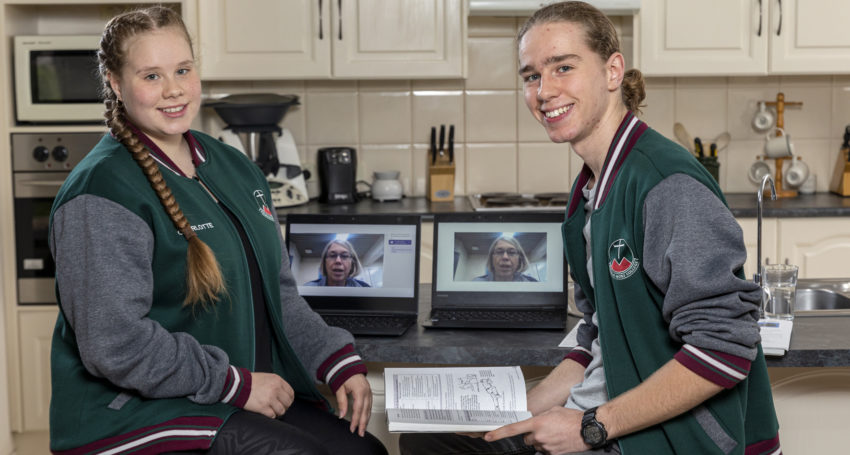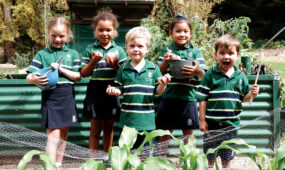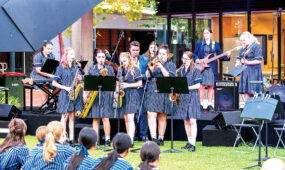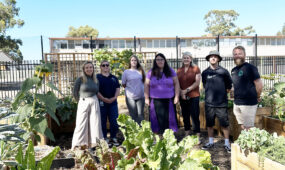New website keeping students connected
Schools
As Term 2 got under way last month, many Catholic school students were studying from home due to the coronavirus pandemic. Supporting them as they learn remotely is a new website developed by Catholic Education – a tool that will continue to be utilised long after this crisis ends.

When the vast implications of COVID-19 began to be felt across our communities in March, the team at Catholic Education knew that as a matter of urgency it needed to develop sustainable remote learning options for the more than 46,000 students at its 101 schools.
While schools remain open, Catholic Education recognised that some parents were choosing to keep their children at home and it became apparent that learning in an online environment was going to be important to ensure continuity of learning for all students – whether from home or at school
Advertisement
In a whirlwind two weeks, a 30-strong team from CESA worked day and night to develop a new website www.cesa.catholic.edu.au/learning-online that will ensure learning continuity and provide support for teachers, students and their families in the weeks and months ahead.
CESA deputy director John Mula said while students have been learning online in a “variety of ways” for many years, this new tool would make it easier for teachers to plan for “remote learning in the current context”.
“With many families choosing to keep students at home during the current COVID-19 pandemic, this platform – together with other online tools such as Seesaw and Microsoft teams – will support teachers in providing lessons in an online environment,” he said.
The website’s content is aligned to the Early Years Framework, Australian Curriculum, Crossways Religious Education Curriculum and SACE. It contains links to websites, lessons and hundreds of educational resources across a range of subjects including English, health and physical education, humanities and social sciences, languages, mathematics, religious education, science, technologies and the arts.
It offers resources on prayer, ways to connect with your Catholic community, tips for maintaining health and wellbeing, supporting learning diversity and ensuring students are safe.
Working on the mammoth project were CESA’s Curriculum, Learning and Wellbeing team, as well as members of the Religious Education, Information and Communication Technology and Marketing teams.
“It was an incredible achievement to turn this around in such a short time in order to provide support for our schools,” said Anna Mirasgentis, manager of the Curriculum, Learning and Wellbeing team.
“There was a sense of urgency as we were responding to new ways of learning and teaching due to COVID-19.
“What we learnt through the process was that opportunity creates innovation, the project energised and mobilised the team and we had a shared aim of developing resources for teachers and opportunities for students. to have agency in shaping their learning as they develop knowledge and capabilities. As a system it provided an opportunity to develop a new narrative about learning, assessment and reporting beyond COVID-19.”
Advertisement
Anna explained that developing the subject content on the website started by utilising the Australian Curriculum to form inquiry questions linked to a big idea, and then providing resources that teachers could use to create learning experiences for their online classroom.
Teachers could then adapt the resources to meet the needs of their students and their particular school context. At all times during the project the team was mindful that the process of remote learning had to be as “accessible for parents and flexible to family circumstances”, Anna said.
Phase 2 of the project is now under way which involves not only receiving feedback from schools and their community but developing a vision for learning and wellbeing beyond COVID-19.
Pleased with the product so far, Anna is particularly excited about the evolution of this website in the future.
“This website will last well beyond coronavirus and what we are now delivering is a new, wonderful tool to build an ecosystem to support a new paradigm for learning and wellbeing,” she said.
Another of the upsides to the surge in remote learning has been the need for schools to address their IT capabilities and skills in using various programs.
Karen Sloan, a senior education adviser at CESA, said some schools were already doing this very well while the changes implemented due to COVID-19 highlighted that others needed some assistance getting up to speed.
Some of the popular learning management systems being used by teachers and students include Managebac, SEQTA and the Microsoft 0365 applications, while Seesaw is commonly a communication tool for many primary schools.
In addition, some schools are ensuring they remain in contact with their families through phone calls and emails.
At Thomas More College in Salisbury Downs, the need to remain connected to families has never been greater, according to principal Corey Tavella.
“We’re really mindful, given we’re the only Catholic 7-12 school in this area, that we want to make sure we continue that point of difference which is to be connected to our kids,” Corey explained.
“For us the experiment hasn’t been to send kids away and see if they go online, but to take the time to produce a deep and broad Connected Learning Model which has learning, wellbeing and spirituality, with an online presence but doesn’t just focus on being online.”
Corey said the importance of remaining connected at these uncertain times extended to the college staff contacting families by phone to make sure they are coping and aware of what is happening.
“Students are a bit apprehensive but one of the things that has come through really strongly in that whole nature of connection is that the students trust us.
“Our role in this has been really important – and they want to hear from us that we have it under control.”
Regional schools throughout South Australia face additional challenges to embrace remote learning – in particular the lack of internet connection due to ‘black spots’ in some areas.
While internet connectivity in Whyalla is good, Samaritan College principal Damien Judd said one of the issues for their students was the disparity in access to resources.
“We’ve been really mindful that we have the full width of students and families and what they have access to… there are students who have the latest Macbook through to a single parent with three children where the only internet is on their phone.”
Damien said by using the new CESA website and other resources available the college had put together a “big learning from home document” which covered everything from the parents’ and students’ point of view. Topics included how to set up your house for remote learning, dos and don’ts, looking after your wellbeing, how to contact counsellors, what to do if your printer doesn’t work and so on.
“At this stage we’re not trying to overload families. There is so much going on already so we’re conscious of ringing people and just asking if they’re okay.”








Comments
Show comments Hide comments